LED lights fill our homes from dining room chandeliers to bathroom mirror lights. The longevity and reliability of LEDs are some of the main reasons why incandescent bulbs have been almost completely replaced by LED bulbs today. Despite this longevity and reliability, you may find an LED light suddenly dim.
Why LED Lights Suddenly Dim and How to Fix It
If you find an LED bulb suddenly dim, a likely cause is a faulty internal component such as an LED diode. Other possible causes are an electrical short, loose wiring, a bulb at the end of its life, low circuit voltage, surge wattage, a damaged dimmer, a broken light switch, or the room temperature.
Faulty Internal Components
The name LED means “light emitting diode”, and is just shorthand for saying that it is an electrical component that gives off light when electricity is passed through it. This diode contains several very small parts including a semiconductor circuit, a reflective cavity to reflect the light, and a wire bond to complete the circuit.
If an LED bulb suddenly dims, it could be that one or more of these tiny parts of the LED are faulty. If you are handy with a soldering iron and a multimeter, you can actually use them to check for faulty internal parts in an LED bulb. Unscrew the cap and disconnect the AC lines from the LEDs using the soldering iron. Check for damaged LEDs using the multimeter, and replace any LEDs which show an incomplete circuit. If you are not confident about this, it’s better to get a new LED bulb.
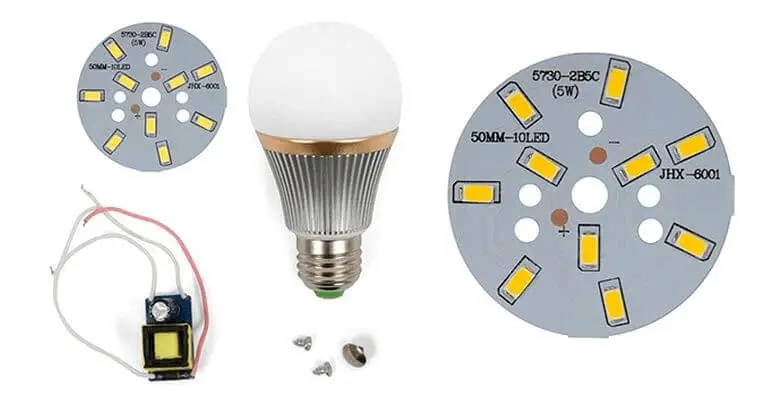
Electrical Short
An electric short is when a wire in your home carrying electricity to something such as light touches a neutral wire. It’s called a “short” because it reduces the length of the circuit, and can happen when wires in the house electrical system are unsecured or put in place without protective plastic housing.
If the lighting circuit is shorted, the loss of electricity within the circuit could be why LED lights suddenly dim. If you suspect that an electrical short has made an LED light suddenly dim, you should call an electrician to take a look.
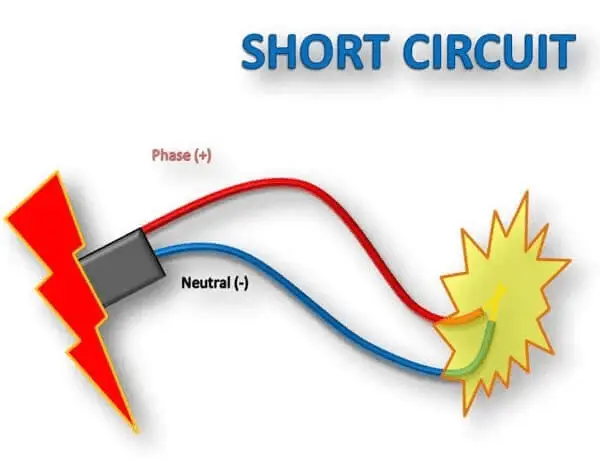
Loose Wiring
Loose wiring increases resistance in a circuit, and this higher resistance means less electricity making it to fittings such as lights. This can occur because of poorly installed fittings, or simply just due to wear and tear over time.
Loose wiring within the circuit of the LED light could reduce the electricity in a circuit and be a reason why LED lights suddenly dim. If you suspect this to be the cause, you should call an electrician to take a look.
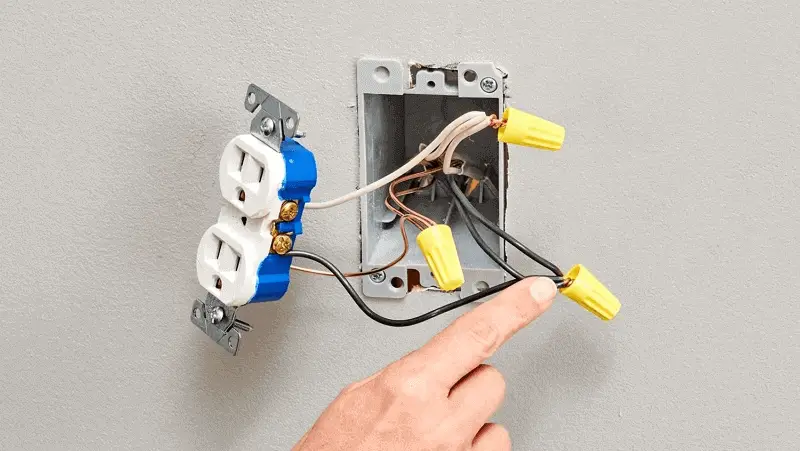
LED Bulb Has Reached the End of Its Life
The typical lifespan of an LED bulb is 50,000-100,000 hours, so using a bulb for 10 hours a day means that it should last up to fifteen years. However, LED bulbs do not wear out the same way as incandescent bulbs. The brightness of LED bulbs degrades slowly over time, whereas incandescent bulbs burn out in one go.
If you find your LED bulb suddenly dim, it might be the bulb is reaching the end of its life. This is because parts of the bulb have begun to overheat. To check whether the bulb lifespan is behind a dim LED bulb, try changing the dim LED bulb to a different one. If the new LED bulb lights up normally, the bulb may be reaching the end of its lifespan.
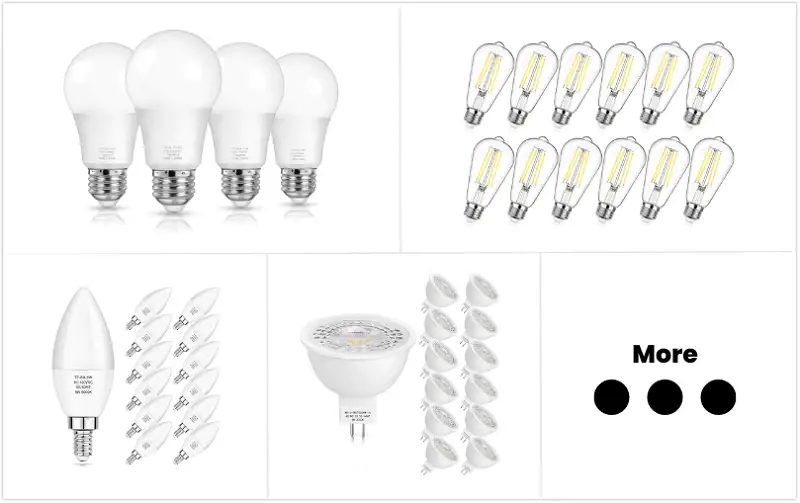
Lower Voltage
One of the disadvantages of LEDs, when compared to older-style incandescent light bulbs, is their poor performance under low voltage. If the voltage rating of a bulb is higher than the voltage of the electricity in your home, this will make an LED light dim.
If you find an LED bulb suddenly dim, check whether the voltage of the LED bulb matches the rated voltage of your home electrical system or not. If there is a difference between the two, this could explain why an LED light is dim. To fix this, you will need to replace the LED bulbs with new ones.
Surge Wattage
Surge wattage is the extra electricity used by heavy-load appliances for 2-3 seconds in starting electric motors. These are things like washing machines, air conditioners, and dishwashers. Though only short, surge wattage can be 2-4 times that of normal running wattage.
You might find that LED lights suddenly dim when these heavy-load appliances are working at the same time. Watch to see if the LED light suddenly dims when heavy-load appliances such as the washing machine are switched on. If you think surge wattage is the problem, you can fix this by putting heavy-load appliances on different circuits in the home, or by using one such appliance at a time.
Damaged Dimmer
Some light fixtures are designed to be dimmable lights. They have a dimmer that can adjust the voltage waveform applied to the light so that you can see the different brightness of the LED bulb.
If you find that your LED bulb suddenly dims, it may be because the dimmer doesn’t work properly and the brightness cannot be increased. This can be fixed by replacing the dimmer of the light fixture.
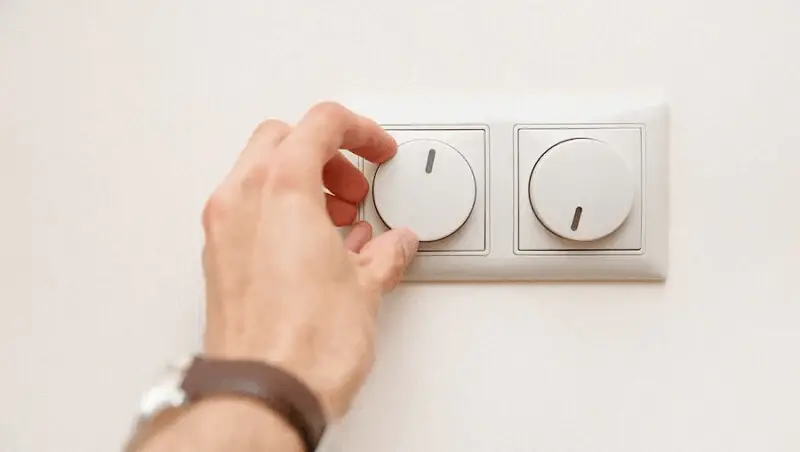
Broken Switch
Switches are used for completing or breaking a lighting circuit so you can switch lights on and off. If the switch is damaged, it may reduce the voltage of the light causing it to be dim. If you suspect that a broken light switch has made an LED light suddenly dim, you should definitely call an electrician to take a look–rather than trying to fix yourself.
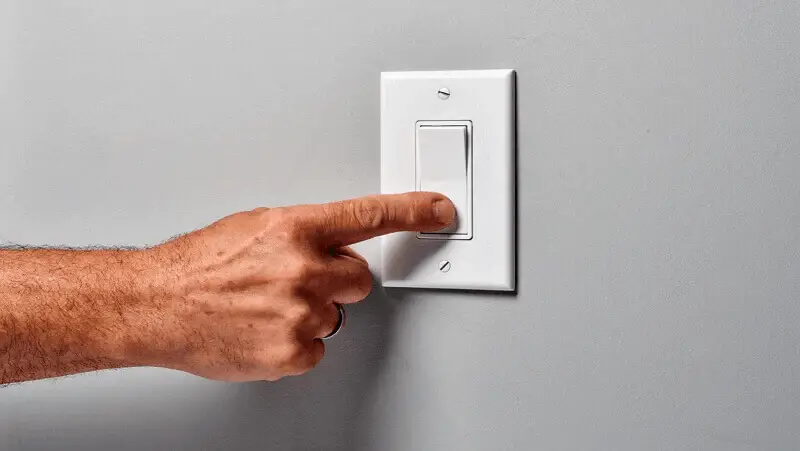
Room Temperature
The amount of voltage an LED can take is dependent on temperature. This is because the resistance within the LED semiconductor components changes when the ambient temperature changes. Higher ambient temperatures mean warmer components leading to higher semiconductor resistance and therefore lower brightness. Increasing ambient temperature from 86 F to 140 F dims an LED bulb by 17-22%.
If you find your LED light suddenly dim, it might be that the temperature in the room is too high. Try turning down the heating or switching on the air conditioning. If you find that this fixes the problem, the high room temperature was likely causing the problem.
Conclusion
If you find an LED light suddenly dim, it can be frustrating–and you might not know straight away how to fix it. The easiest things to try are replacing the bulb or looking at where other appliances are using a lot of electricity, and these are things that you can do yourself. If trying these things doesn’t fix the problem, it could be an electrical short, loose wiring, or a broken light switch. For these things, it is probably best to turn to an electrician who can fix the problem safely and effectively.
Jobs you can do yourself
- Replacing the bulb
- Changing room temperature
- Avoiding surge wattage
Time to call an electrician
- Electrical short
- Loose wiring
- Damaged dimmer
- Broken light switch

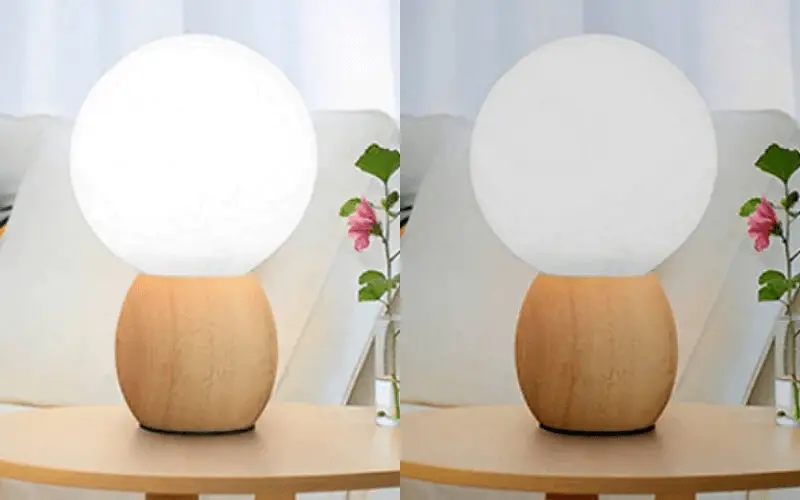

Hi Edward,
Very informative post.
Regards.